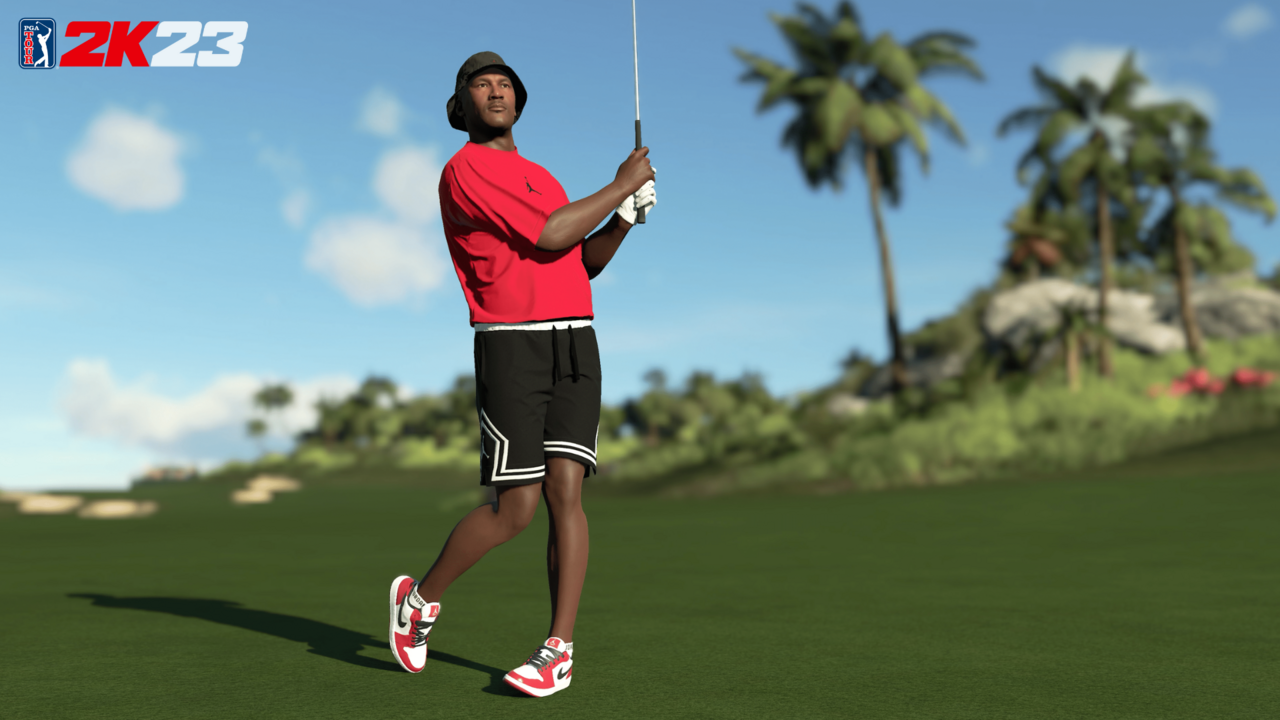The goal is simple – adjust the car’s handling to your driving style. Every car handles differently. Some have understeer, some have oversteer, but that’s a separate topic related to engine layout, drivetrain etc. Let’s not get into that right now.
So the goal is clear. What are the obstacles? Handling and Stability. These two factors are related. So if you add handling, you give away stability. The car will turn sharper, hold the road better, but the likelihood of sudden loss of grip will also increase. Up to a certain point, you’re improving both the handling and the stability of the car. But there comes a point where further improvements in handling lead to a serious loss of stability. For example, if you improve the speed at which the car changes direction, you increase the likelihood of “snap oversteer” and so on.
Ideally, you want to find the line where the car handles best and doesn’t try to crash into the nearest barrier. But how do you do that?
The basic law of tuning is: The first part of the car to lose traction is the part that is tuned stiffer. This means that if the front suspension is stiffer than the rear, you’ll get understeer. If the rear suspension is stiffer than the front, you get oversteer.
Using this law of tuning, you increase or decrease the stiffness of the front or rear suspension to add or remove understeer or oversteer. Sounds simple, doesn’t it?
Tires

- If you increase the pressure, you will get sharper steering, but you will lose grip. The car will turn sharper, but lose traction more quickly.
- If you reduce the pressure, you increase the grip, but at the cost of some loss of steering sharpness.
However, the pressure will increase by 0.2-0.5 bar (2-7 psi) as the tire heats up. To set the correct pressure, first ride a few laps and then check the pressure via telemetry. If it is higher, lower the pressure. If it is lower, increase the pressure.
The ideal pressure, in my opinion, is 2.2 bar (29 Psi).
Gearing

I’ll talk more about the gears later. But everything is simple. Either the car has a high top speed but takes a long time to reach it, or the car has very quick acceleration but low speed.
Сamber, Toe, Caster

Camber
- Front wheel camber – Increasing the camber allows the car to hold the road better in a corner and turn more easily. However, you will lose braking power and stability when braking. You will also lose acceleration in front wheel drive cars.
- Rear wheel camber – Same as the front wheels. Increasing the chamber helps the rear wheels grip the road better when cornering. In return, you sacrifice acceleration (on rear-wheel drive cars), braking, and stability under braking..
The chamber is set using telemetry. In a corner, the inside of the tire should be 5-10 degrees hotter than the outside. If the outside of the tire is hotter than the inside, increase the chamber. If the inside is too hot (15+ degrees) – decrease the chamber.
Toe
Toe in or out is usually not worth doing. It can mess up the steering too much. But it is done this way.
- Increasing TOE-OUT will have the largest effect at corner‐entry by speeding up the car’s response to the initial turn of the wheel. The tradeoff can be straightline speed and stability.
- Increasing TOE-IN should increase stability in the braking zones and slow‐down the response to the initial turn of the wheel. The compromise is that TOE‐IN will produce an increase in scrub that will slow straightline speeds. more deviation to having the tires pointed straight, the more straight‐away speeds are negatively affected.
This is true for both front and rear wheels. Wait no, it’s the other way around for the rear wheels.
Increasing Toe in on rear wheels helps improve the car’s handling. But it reduces stability.
Increasing Toe out, on the other hand, Increases stability under acceleration ( car’s rear end is less floppy), but decreases handling.
Caster
- Increasing the caster improves the stability of the car at speed, the car is more willing to straighten itself. However, you will lose steering response when turning. Also, bumps and curbs will “steer” the car and straighten it out.
- Reducing the caster, on the other hand, increases the speed of turning and the responsiveness of the steering. But the car loses stability at speed and becomes too responsive to the steering wheel.
Anti Roll Bars (ARB)

ARB is an extremely powerful tool for tuning understeer and oversteer. The tuning is done according to the basic law of tuning.
If the front ARB is stiffer than the rear, you get an understeer. If the rear ARB is stiffer than the front ARB, you get an oversteer.
- By increasing the stiffness of the front ARB, you increase the understeer.
- By decreasing the stiffness of the front ARB, you increase the oversteer.
- By increasing the stiffness of the rear ARB, you increase overstir.
- By decreasing the stiffness of the rear ARB you increase the understir.
But remember that ARB’s only “work” when the car is turning, i.e. at the beginning and middle of a turn.
Springs

Before adjusting the spring stiffness, the ride height is set first.
Ride Height
Ideally, if you want the car to be as close to the road as possible, you need the lowest ground clearance possible.
But on the track there are bumps and potholes that can ” Punch through” the suspension and send you flying off the track.
Also, if you like to drive on curbs, you should use a little higher ride height.
- The lower the ride height, the more responsive the car will be to steering inputs and the easier it will be to turn. On the other hand, there is an increased chance of “punching through” the suspension by compressing it to 100% and losing control.
- The higher the ride height, the more bumps the car can handle on the track without losing stability. In return, you give away the car’s responsiveness.
The springs are adjusted according to the basic law of tuning and according to the weight distribution of the car. The law is clear, but what is the weight distribution?
It is simple, every car has its own weight distribution, i.e. how much of the car’s weight is on the front and rear wheels. For example – if the car weighs 1000 kg and has a 50/50 weight distribution, it means 500 kg on the front wheels, 500 kg on the rear wheels.
If the weight distribution is 55/45, that means 550 kg on the front, 450 kg on the rear. The more weight on a particular part of the car, the stiffer the springs should be on that part.
If the front is heavier, the front springs should be stiffer than the rear springs. And the lower the ride height , the stiffer the springs need to be to prevent “Punch through” I think that makes sense.
The stiffer the springs, the sharper and faster the car will turn.
- Stiffening (+) the front springs tends to increase understeer.
- Softening (-) the front springs tends to increase oversteer.
- Stiffening (+) the rear springs tends to increase oversteer.
- Softening (-) the rear springs tends to increase understeer.
Dampers

Dampers won’t limit the total amount of load transfer through the car, but will affect the amount of time it takes the loads to transfer. Therefore, the car’s behavior during moments of transition; such as initial brake application, brake release, initial turn‐in and application of throttle can be affected by a damper setting change.
Compression
Compression (Front)
- Stiffer Compression: Slows down the car’s frontward weight transfer upon initial brake application. The compromise is a slight loss of compliance.
- Softer Compression: Adds grip to the front tires through better compliance, but at the cost of stability of the vehicle.
Compression (Rear)
- Stiffer Compression: This change is most effective at reducing UNDERsteer at turn‐in and mid‐corner and resisting UNDERsteer at initial throttle application, at the cost of possible OVERsteer both at turn‐in and throttle‐on at the exit of the corner.
- Softer Compression: This change should improve rear grip through better compliance. The corner‐entry handling balance will move toward UNDERsteer along with improved power‐down. The compromise is increased UNDERsteer at turn‐in and under throttle‐on conditions, such as at the corner exit.
Rebound
Rebound (Front)
- Stiffer Rebound: As the brakes are released at corner‐entry, the initial turn‐in should be more positive, with less UNDERsteer. Taken too far, this can produce turn‐entry OVERsteer.
- Softer Rebound: As the brakes are released at corner‐entry, the tires will have better compliance, while the handling balance will shift toward UNDERsteer. The compromise is the potential for increased UNDERsteer at corner exit.
Rebound (Rear)
- Stiffer Rebound: Will produce increased UNDERsteer at corner entry. The potential downside is less compliance when the throttle is opened.
- Softer Rebound: This change will be best felt at corner entry with less UNDERsteer and improved throttle‐open compliance. The potential downside is that the driver may have less control at corner entry.
Suspension Geomentry

Aero

Aerodynamics should be simple to understand. If you increase downforce, you increase grip. In return, you give up acceleration and top speed. But remember, aerodynamics only works at speed. It’s useless in slow corners.
Be careful, you can overdo the aerodynamics.
- Too much aero in the front, the car will oversteer.
- Too much aero on the rear, the car will have understeer.
Brakes

Brakes? Who needs brakes? They only slow the car down.
As a car decelerates, load transfers to the front tires, which generally improves their grip, while decreasing the grip at the rear of the car. The goal is to adjust the proportion of the braking forces between front and rear (brake bias) in order to maximize overall braking efficiency. If the brakes are still applied as the car turns into the corner, the brake‐bias setting will also have an effect on the car’s turn‐in balance.
Brake Bias
- Increasing Front bias: Shown as a larger number, increasing brake bias to the front will put more braking force into the front tires. This will stabilize the car in braking zones and increase understeer at corner entry. The compromise is that with too much front bias the rear tires are being under‐utilized and overall braking efficiency will suffer.
- Reducing Front bias: This puts more braking on the rear tires, which, within limits, improves braking efficiency. Too much rear brake bias, though, hurts performance in two ways. First, it reduces overall braking efficiency.
More seriously, too much rear brake bias, particularly if the driver is not braking in a straight line or has weak footwork on downshifts, can cause the rear tires to lock up, which puts the car in a dynamically unstable condition that can easily result in loss of vehicle control. Note that with a moderate amount of rear‐brake bias, the car will have a tendency to rotate (OVERsteer) at corner entry upon brake release.
Brake Pressure
Quite simply, the higher the number, the less pressure you need to apply to brake harder. And vice versa. This is useful if you are constantly under- or over-braking. Just increase or decrease the pressure values.
For example, I’m constantly under-braking, my finger muscle memory is pressing the brakes up to 50%. But ideally I need to apply the brakes up to 85% and I just increase the pressure until I reach that value without locking my wheels.
Differential

In a corner, the inside and outside wheel rotate at different speeds and the diff determines this difference. The acceleration setting works when you accelerate. The deceleration value works when you brake or coast.
The idea is that the diff setting works according to the following system.
Increasing the value speeds up the locking time and reduces the difference in wheel rotation.
Acceleration
- More % – Increases oversteer, Decreases understeer, especially out of tight corners. Decreases spin of the tyre without traction.
- Less % – Increases understeer,Decreases oversteer especially out of tight corners. Increases spin of the tyre without traction.
Deceleration (Braking and Coasting)
- More % – Increases braking stability, effective
- Decreases willingness to turn
- Increases understeer
- Less % – Decreases braking stability, effective
- Increases willingness to turn
- Decreases understeer
Notte: I’m working on a more detailed description for all drive types – RWD, FWD, AWD.
Steering Wheel



